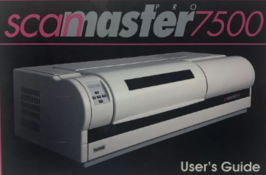My opinion based on owning a Colorgetter PMT drum scanner and various other high quality CCD flatbed scanners and now currently using a digital camera copy stand approach is that I wouldn't go back to any of the prior methods because the workflow is much faster and appears to be equally good in most respects with a digital camera approach, but the devil is in the details.
I certainly wouldn't go back to something like the Flexscan because it doesn't offer the one key aspect of a PMT drum scanner that the modern digital camera approach does not offer, which is the variable of over- or under- scanning and sampling increments.
This is the one big thing that you can work with in in a drum scanner that all the other approaches don't offer, and at times, this capability can be very useful for really high quality scans where the reproduction ratio is going to be very high. Most of the time, this isn't much of a concern, but when going very large, you can adjust the sampling increment and the sampling aperture to help adjust the way that the scanner records film grain. You can enhance or reduce the appearance of grain by how much the sampling aperture over- or under- samples the sampling increment. Undersampling will tend to increase the grain appearance in a scan, and oversampling can soften the grain in a scan.
None of this will really be apparent unless you are doing pretty large reproductions... 10X would likely be the very beginning of any kind of appreciable impact, and really it's be more like 15x or 20x before you could look at the differences and start to make clear differences in one vs. the other. And a lot of this will be somewhat aesthetic, so it's possible that the digital camera will produce a more pleasing scan in the right circumstances whereas the drum scan could do it in other conditions or when different options are chosen during the scanning process.
One thing I do know is that the Flexscan machines I've seen don't have anywhere near the DR capability of modern high end digital cameras and so they will likely not compare favorably to a high quality digital camera setup when operated with good methods and when using a high quality copy lens. They also don't have the resolution of the modern digital cameras to match (compared to a D850 or far, far better, the Fuji GFX 100MP cameras). Also, no, pixel shift isn't going to gain you anywhere near what you might think (at least in terms of resolution), but it will gain an improvement in aliasing artifacts when getting down to the smallest resolutions the system is capable of. That's hard to distinguish on film grain at times, but easier to see with a Siemens star.
If you are absolutely dedicated to producing the highest resolution and highest fidelity scans, you can likely do better with the last of the Howtek scanners, but the price of admission is high and the effort required is also very high. At that point you have to ask yourself whether you need 8000 SPI scans all that often and is it really necessary to go that large with your 4x5 or 120 film scans... Do you intend to be printing huge reproductions regularly or not and if so, do you want to dedicate a room in your facility for the scanner and computer station and all the time it'll take to get competent on the scanner. The learning curve isn't going to be easy and using old hardware will pose operating system issues that you'll need to overcome. One thing about an 8000 SPI scan is that it is effectively "rendering the grain" and the gaps between the grain. There isn't really more information to be captured than the grain and you are just getting more precisely captured grain structures when you are going that high in the sampling. So, the image won't really look more detailed, but the grain will appear to be more clearly rendered with high quality super high resolution scans.






